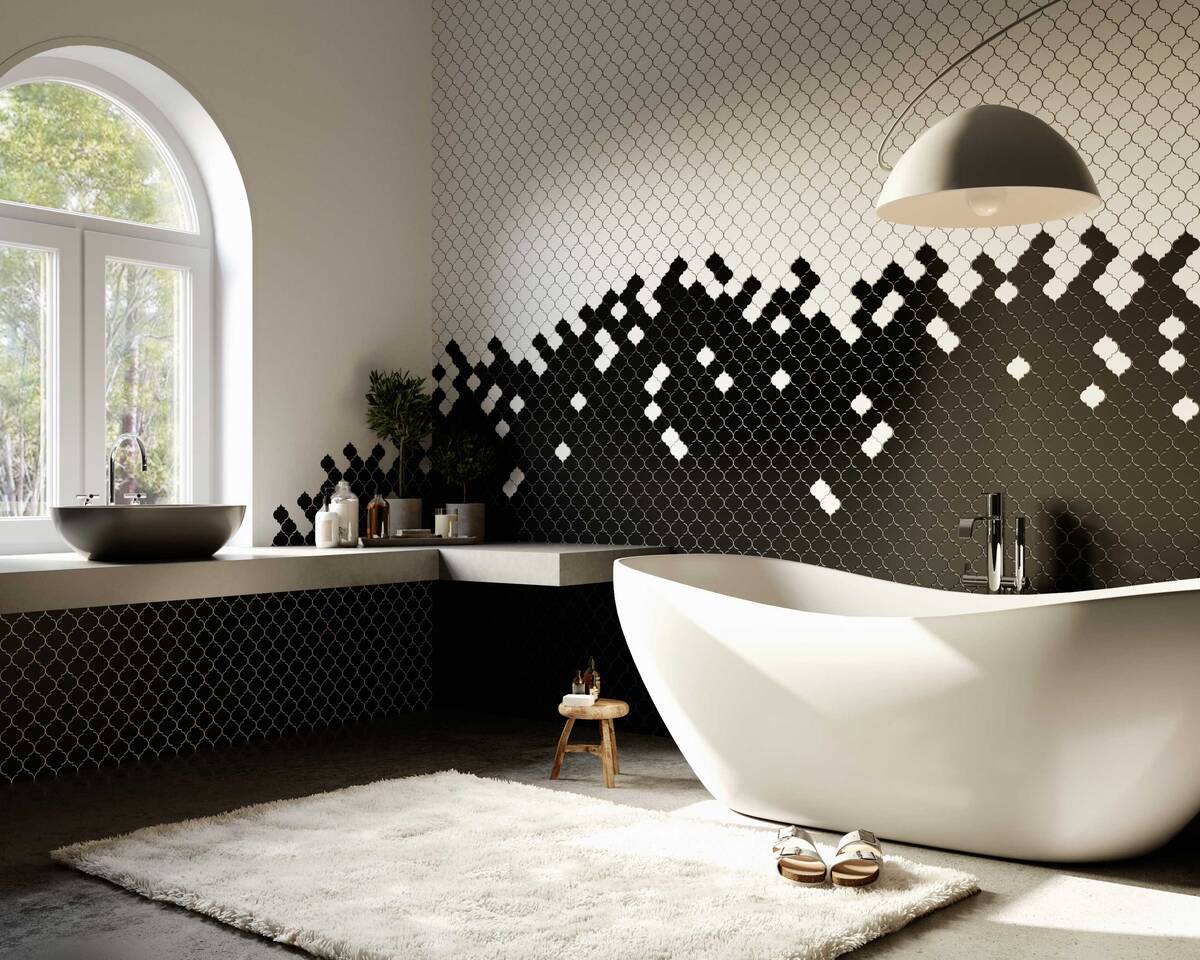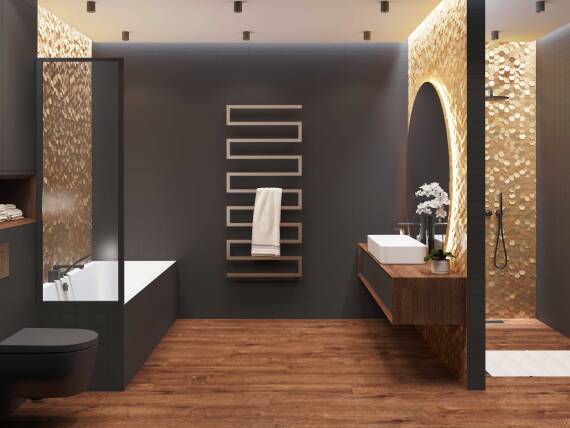Small tiles with a huge impact
Mosaics in the bathroom: wall designs with a personal touch
Mosaics in the bathroom are on trend. The tiled patterns are made up of small elements and offer a variety of materials, shapes and colours for extravagant design solutions. What many fans of design don’t know is the decorative wall embellishment could be found in temples and secular buildings as far back as the ancient world.

A design highlight with a lengthy tradition
Early Greek tile murals were made of natural pebbles. The Romans worked with evenly carved stone cubes so that they could be laid more precisely. This also enabled them to cut down on joints. The small cubes also helped them to draw highly accurate lines and create colour gradients. One impressive example has four million tiles spanning 15 square metres: the Alexander Mosaic in Pompeii.
A turbulent history: Christian church mosaics
Early Christian artists used glass stones that strongly reflected the light. They were perfect for furnishing the spaces inside churches. Some of the most significant works can still be seen at a UNESCO World Heritage Site in Ravenna.
The Byzantine Empire also brought mosaic art to places of worship. When the Ottoman Empire took over and converted the churches into mosques, they were concealed under plaster and paint – or were destroyed. Gold tesserae mosaics originally spanned a 10,000 square metre space in Hagia Sophia in Istanbul. Although the famous Deësis mosaic has since been uncovered, Hagia Sophia was turned into a museum in 1935 and then converted back to a mosque for the second time in 2020, so the work of art is now covered with curtains.
An unsolved riddle: the geometry of Islamic tile mosaics
Geometric patterns are traditional in Islam. Due to Islamic aniconism, typical tile mosaics do not portray people, but geometric shapes and calligraphy. It should be noted that both of these are highly complex to create.
In 2007, scientists in Iran discovered aperiodic patterns on buildings dating back to the 15th century. Mathematicians only discovered these patterns for themselves 30 years ago. There is still some disagreement as to whether the ‘quasi-crystalline’ geometry is accidental or whether Oriental architecture was 500 years ahead of us. But one thing is for sure: Islamic mosaic art is impressive.

The bathroom as a temple for design
These colourful little tiles being made by hand is a thing of the past. But even when they are laid out on mats before adorning walls, the craftsmanship is still just as radiant as ever – especially in the bathroom.
Mosaic tiles catch the eye and breathe life into a room. They come in every shade of colour, in edge lengths starting from one centimetre and in square, rectangular, round and oval shapes. Choosing the size and shape of the tiles will depend on the size of your bathroom and the desired effect.
Different materials for a powerful effect
Just like in the kitchen, the material makes all the difference in the bathroom:- Glass impresses people with its intense colours and shine. As a material option for your bathroom, it is at the upper end of the price range.
- Stoneware is a popular alternative. Specialised glazes and relief finishes can be used to make stoneware look very similar to glass mosaics.
- Ceramics lack the natural transparency of glass. But they can otherwise be used to achieve pretty much any other result in terms of colour and surface texture.
- Marble or granite combine the impressive material properties of these natural stones with their very special look.
- Metals such as stainless steel or aluminium can also be used, mainly in a mix of materials, for example with glass.
Combining materials is great for achieving bold effects in other ways. Tile manufacturers can make almost anything possible here these days.
The surface finishes make the look
Mosaic tiles can create very different effects. But above all, they visually divide the room. So we recommend not using them throughout: Add character to your walls and emphasise one area of your bathroom with intense colours and shiny surfaces.
In another place, use block matt colours for an understated look. Play with shapes and patterns. Use the surface textures with 3D effects for a hint of extravagance. Textured tile surfaces are also highly functional: They conceal limescale and other unpleasant deposits. We recommend deliberately matching mosaic walls with bathroom furniture and taps.
You will see: The wall surface and furnishings will draw attention to each other.
Frequently asked questions about mosaics in the bathroom
They are patterns consisting of many little elements, and they adorn wall and floor surfaces.
They were used to decorate villas and temples in Ancient Greece and Rome. Christian and Islamic mosaic art was later used in churches and mosques.
They can add character to walls and create visual separation in your bathroom. They look extravagant and high quality.
They can be made of glass, ceramics, stoneware, granite, marble and metal. Mixing these materials is also very popular.
Smoothly polished or shiny, these artistic tiles always catch the eye. Walls with a single texture and colour remain in the background. Surface finish effects in 3D introduce extravagance.
Bathroom mosaics: stone for stone a design statement
3D surface finishes, tone-on-tone décor or intense, shiny colour: There’s nothing you can’t do with your bathroom design. Today’s bathroom mosaics may no longer be hand crafted, but the little tiles are creative, extravagant and great quality – highly suitable for drawing attention to this room.Trusted partners